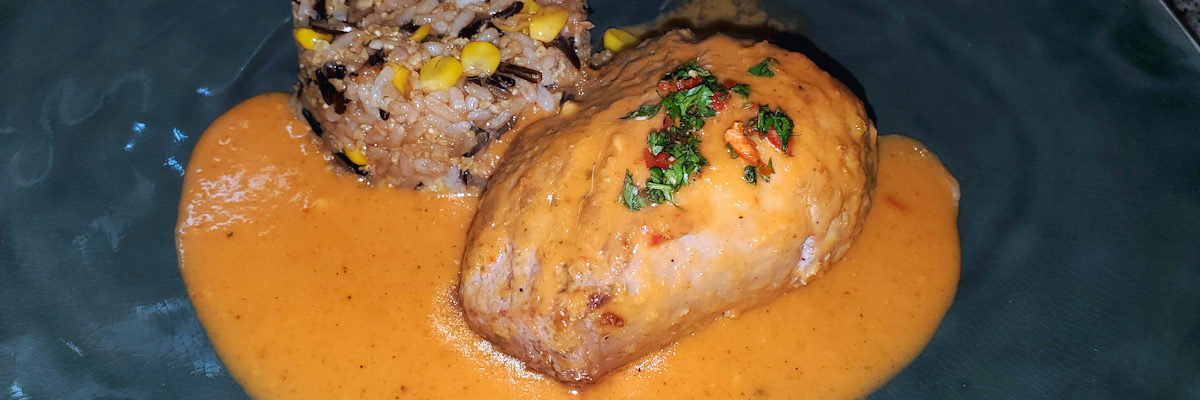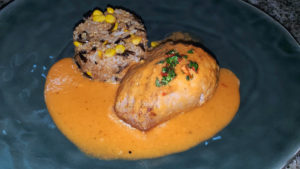Our featured dish, this time around, Ceviche de Solomillo de Cerdo – or, pork tenderloin ceviche. Now, does that mean we’re chowing down on raw pork basted with a little lime juice? No. Not at all. As I’ve mentioned before, there’s a long time tradition in Peruvian cuisine, particularly in the north, of ceviches with chicken and duck. But, other than the occasional person who I’m pretty sure has misinterpreted the whole thing, no one’s doing that with raw birds. You marinate and cook the meat in the curing liquid, and then turn the liquid into a sauce. We’ve done numerous versions with both chicken and duck, to great success. So, why not something else?
I turned to pork. Is there a tradition, at all, of that in Peruvian cuisine? I’m not sure there’s a tradition, but it’s not non-existent. Mostly it seems to be dishes of fish ceviche with some added crispy pork belly, i.e., chicharrón, as a garnish, though a few focus on just the pork. There are a couple of versions that show up from Spain, but we’re once again led down a rabbit hole of misunderstanding (or, perhaps, just creative interpretation) – I watched with fascination as two chefs sliced up some pork shoulder and “cured” it for a whole whopping ten minutes in lime juice with some garlic and “just a little chili, we can’t have it be spicy” (fish ceviche is usually cured longer than that – their assertion was “five minutes” – real traditional ceviche is typically cured for around twenty before serving, though there’s the whole modern Nikkei tradition of curing it last minute and essentially serving citrus basted sashimi). And then added and pork stock to it…
“Peruvians add what they call leche de tigre to ceviche, that’s what we call caldo de pescado (fish stock),” they said. No, no, it’s not. Leche de tigre is the combined liquid after marinating fish in the curing mix of lime juice, chilies, garlic, cilantro, etc. It’s not fish stock. I’ve never seen anyone add fish stock to a ceviche. I mean, I guess it would add an interesting flavor, and I have seen chefs add a little water to cut the acidity of lime juice, in fact, Henry taught me to do that if it happens that the citrus is especially sour. Fish stock? Why not? But that’s not just what Peruvians call leche de tigre.
…and then they served it up garnished with thick plumes of raw red onion. Essentially still raw pork, little spice, minimal salt to balance citrus, nothing about it looked appetizing.
So on to our inspiration.
Solomillo, or tenderloin, of pork. Marinated in a mix of lime, salt and pepper for about four hours. Then seared in a mix of oil and butter, and put into the oven to cook through to a nice medium.
The sauce, a quick cooked blend of vegetable stock, lemon and orange juices, ginger, garlic, roasted piquillo peppers, red onion, rocoto chilies, cumin, salt, pepper. Just simmered until the vegetables are softened. Then pureed. To serve, we made a quick roux of butter and a little flour, and then added the pureed mixture to it to thicken it up.
Accompanying, separately cooked white rice, wild rice, and millet, each in salted water, until just barely done. Left aside to cool. Then, sauteed garlic with a mix of sesame and vegetable oils, added fresh corn and sauteed until lightly browned, then added in the three grains and tossed to heat through and coat well with the oil. Finished with a splash of soy sauce.
Garnish – a little chopped cilantro and chili.

